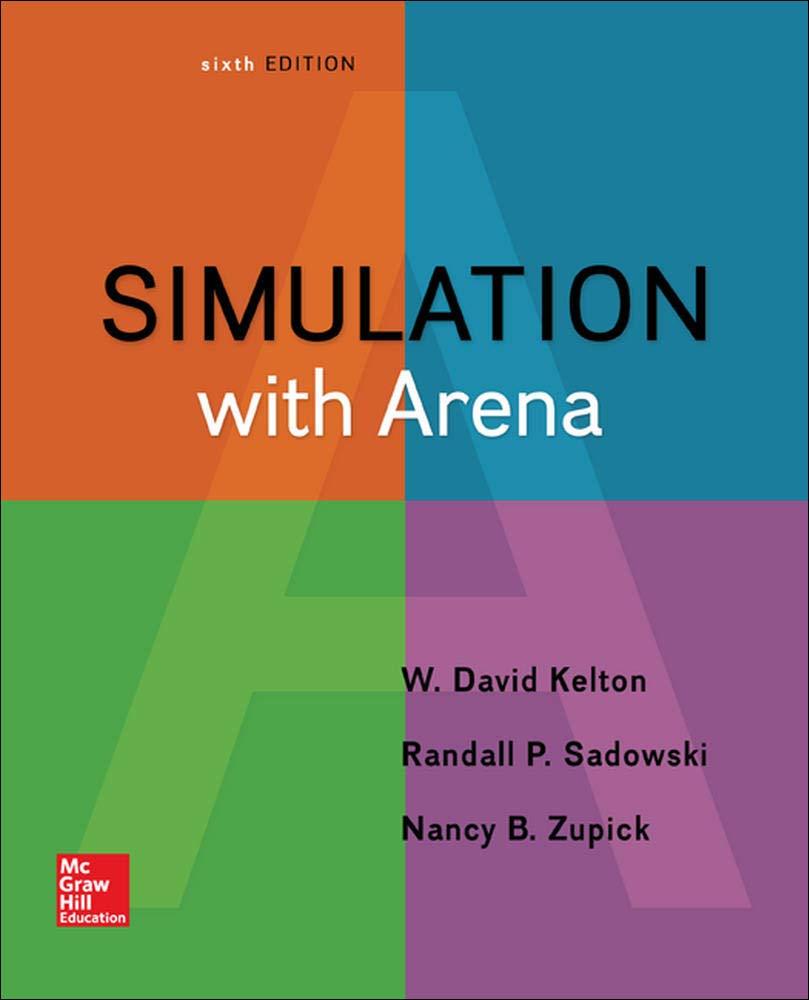An off ce that dispenses automotive license plates has divided its customers into categories to level the
Question:
An off ce that dispenses automotive license plates has divided its customers into categories to level the off ce workload. Customers arrive and enter one of three lines based on their residence location. Model this arrival activity as three independent arrival streams using an exponential interarrival distribution with mean 10 minutes for each stream, and an arrival at time 0 for each stream. Each customer type is assigned a single, separate clerk to process the application forms and accept payment, with a separate queue for each. The service time is UNIF(8, 10) minutes for all customer types. After completion of this step, all customers are sent to a single, second clerk who checks the forms and issues the plates (this clerk serves all three customer types, who merge into a single f rst-come, f rst-served queue for this clerk). The service time for this activity is UNIF(2.65, 3.33) minutes for all customer types. Develop a model of this system and run it for a single replication of 5,000 minutes; observe the average and maximum time in system for all customer types combined. A consultant has recommended that the off ce not differentiate between customers at the f rst stage and use a single line with three clerks who can process any customer type. Develop a model of this system, run it for a single replication of 5,000 minutes, and compare the results with those from the f rst system. Put text boxes in your Arena f les with the numerical results requested.
Step by Step Answer:

Simulation With Arena
ISBN: 9780073401317
6th Edition
Authors: W. David Kelton, Randall Sadowski, Nancy Zupick





